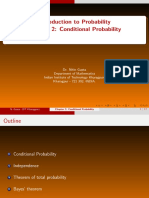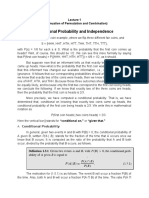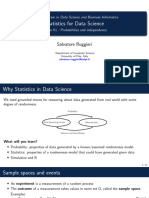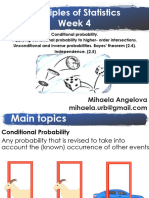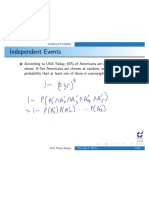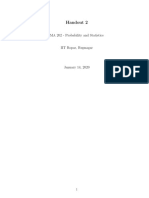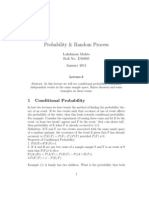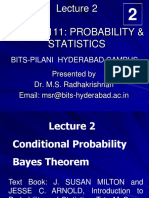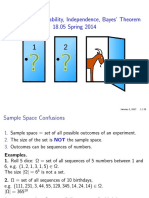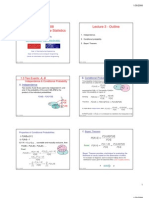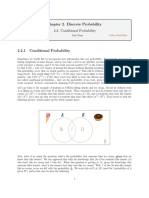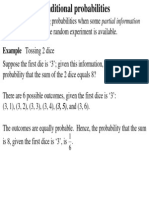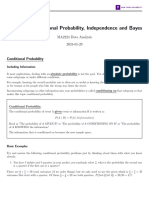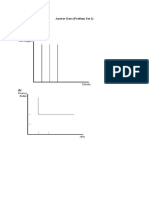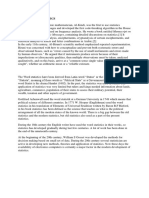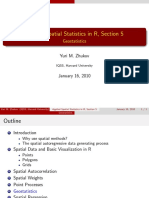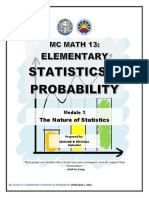0% found this document useful (0 votes)
48 views9 pagesLec2f Part2 PDF
This document is a presentation on conditional probability by Professor Pritam Ranjan. It includes definitions of conditional probability, the product rule, total probability, and independent events. It provides examples using an urn model and tree diagrams to illustrate conditional probabilities and independent events. It poses probability questions related to drawing balls from urns with replacement and without replacement.
Uploaded by
srivastavavishistCopyright
© © All Rights Reserved
We take content rights seriously. If you suspect this is your content, claim it here.
Available Formats
Download as PDF, TXT or read online on Scribd
0% found this document useful (0 votes)
48 views9 pagesLec2f Part2 PDF
This document is a presentation on conditional probability by Professor Pritam Ranjan. It includes definitions of conditional probability, the product rule, total probability, and independent events. It provides examples using an urn model and tree diagrams to illustrate conditional probabilities and independent events. It poses probability questions related to drawing balls from urns with replacement and without replacement.
Uploaded by
srivastavavishistCopyright
© © All Rights Reserved
We take content rights seriously. If you suspect this is your content, claim it here.
Available Formats
Download as PDF, TXT or read online on Scribd
/ 9

